CHILDREN’S SPECIAL EDITION















AUGUST 2025
HEALTH, WELLNESS & NUTRITION

INSIDE



Keeping Kids Safe in the Digital Age
Raising Mentally and Physically Strong Athletes


7 Tools to Support Your Child’s Mental Health + more!







CHILDREN’S SPECIAL EDITION















AUGUST 2025

INSIDE



Keeping Kids Safe in the Digital Age
Raising Mentally and Physically Strong Athletes


7 Tools to Support Your Child’s Mental Health + more!







READ THE WASHINGTON INFORMER YOUR WAY:
n In Print – feel the ink between your fingers of our Award Winning Print Edition
n On the Web – www.washingtoninformer.com updated throughout the day, every day
n On your tablet
n On your smartphone
n Facebook
n Twitter
n Weekly Email Blast – sign up at www.washingtoninformer.com

202-561-4100


For advertising contact Ron Burke at rburke@washingtoninformer.com ...Informing you everyday in every way

In Memoriam Dr. Calvin W. Rolark, Sr. Wilhelmina J. Rolark
PUBLISHER
Denise Rolark Barnes
THE WASHINGTON INFORMER
NEWSPAPER (ISSN#0741-9414) is published weekly on each Thursday. Periodicals postage paid at Washington, D.C. and additional mailing offices. News and advertising deadline is Monday prior to publication. Announcements must be received two weeks prior to event. Copyright 2016 by The Washington Informer. All rights reserved. POSTMASTER: Send change of addresses to The Washington Informer, 3117 Martin Luther King, Jr. Ave., S.E. Washington, D.C. 20032. No part of this publication may be reproduced without written permission from the publisher. The Informer Newspaper cannot guarantee the return of photographs. Subscription rates are $55 per year, two years $70. Papers will be received not more than a week after publication. Make checks payable to:
THE WASHINGTON INFORMER 3117 Martin Luther King, Jr. Ave., S.E Washington, D.C. 20032
Phone: 202 561-4100
Fax: 202 574-3785
news@washingtoninformer.com www.washingtoninformer.com
STAFF
Micha Green, Managing Editor
Ron Burke, Advertising/Marketing Director
Shevry Lassiter, WIN-TV Producer
Ra-Jah Kelly, Digital Asset Manager
Lafayette Barnes, IV, Editor, WI Bridge DC
Desmond Barnes, WIN Daily Editor
Anthony Tilghman, Social Media Strategist
ZebraDesigns.net, Graphic Design
Mable Neville, Bookkeeper
Angie Johnson, Office/Circulation Manager
REPORTERS
Stacy Brown, National Reporter
Sam P.K. Collins, Political/Education Reporter
Zerline Hughes, Housing Reporter
Brenda Siler, Lifestyle Reporter
Lindiwe Vilakazi, Health Reporter
Ed Hill, Sports Reporter
Jada Ingleton, WI Content Editor
Eden Harris, Reporter
PHOTOGRAPHERS
Shevry Lassiter, Photo Editor
Ja Mon Jackson, Asst. Photo Editor
Roy Lewis, Jr.
Robert R. Roberts
Anthony Tilghman
Abdullah Konte
Cleveland Nelson
INTERNS
Trevor Johnson, Summer Intern
Ve Wright, Summer Intern
Will Armstead, Summer Intern


By Micha Green WI Managing Editor
It’s August, which for many in the D.C. area means it’s that time of year for back-to-school shopping, getting vaccinations, and ensuring that children have everything necessary to return to the classroom and have a successful school year.
However, preparing students for the year ahead is not just about having No. 2 pencils, notebooks and a planner; it’s also important to prioritize mental and physical wellness.
“Research shows a strong connection between healthy behaviors and academic achievement (such as grades, standardized tests, graduation rates, attendance),” according to the Centers for Disease Control (CDC).
In this special edition, Soul Therapy Media’s Julian B. Kiganda and Viola Llewllyn contribute articles that empower parents and students with tools, resources and guidance. From helping student athletes prevent injuries, to protecting children online and tools to promote positive mental health, this is not just an informational edition, but rather a roadmap in order to navigate the school year and beyond.
Each story emphasizes the adults in children’s lives make a major difference in their overall health, safety and accomplishments.
Further, this special edition also features advertisements and content from Giant, Prince George’s Community College, DC Central Kitchen, Adventist Health, the Thelma D. Jones Breast Cancer Fund, Ralph Lauren Center for Cancer Prevention, Power Weight Loss Program, AmeriHealth, Safeway, Whitman-Walker, Capital Area Food Bank and Dr. Bonita Coe, to keep the whole family healthy year round.
Finally, as summer winds down and the world continues to navigate economic, financial, racial, educational and health disparities, tapping into wellness techniques is a perfect way of combating challenges.
While personal health might not be a means of making things better worldwide, it is the first step in being prepared to fight any battle ahead.
“The way you help heal the world,” Mother Teresa once said, “is you start with your own family.”
n
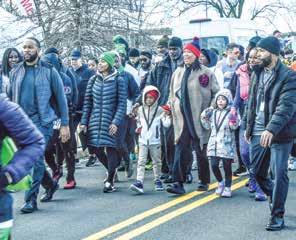

By Viola Llewellyn Soul Therapy Media
Most American students (55.4% according to Project Play) participate in at least one sport each school year, and whether it’s for fun or for the love of competition, staying strong, healthy, and injury-free is always the goal.
While parents push to keep their children moving, and the U.S. government works to get 63.3% of youth participating in organized sports in five years through the Healthy People 2030 initiative, wellness experts note it is important to always prioritize young people’s mental and physical health and safety.
“Mental health and dietary habits must be supportive of growth and sporting excellence,” Fiona Orlandella, founder of FionaFitness in Silver Spring, Maryland, told The Informer.
According to Johns Hopkins Medicine, about 30 million young people participate in organized sports, with more than 3.5 million injuries each year.
“By far, the most common injuries are sprains and strains,” Johns Hopkins reports.
Supporting student athletes means taking a well-rounded approach—combining preventive care, smart conditioning, good nutrition, and the right mindset.
As the school year kicks off, experts such as Orlandella, chiropractor Dr. Scot Kampmann and Sumi Epie, a functional nutritionist, empower young people and parents with tools they need to perform their best this season and beyond.
Balancing Nutrition and Development, Fueling for Performance and Recovery
With more than 15 years of experience working with high-performing student athletes, Orlandella knows first-hand how vital dietary wellness is to physical performance.
“The balance between physical conditioning and diet, especially for girls who are going through puberty [is important],” Orlandella said.
She emphasized the potential long-term effects of neglecting opportunities to foster well-rounded development.
“The impact on mental and physical health can lead to serious, negative outcomes when girls, and even boys, try to control their weight through unhealthy dieting,” Orlandella added, “which can lead to extreme weight loss and hormonal imbalances.”
By highlighting the connections between nutrition, conditioning, and injury prevention, nutrition experts offer some good news to those trying to improve their health and wellness: it doesn’t require a special diet or supplements.
It’s about the right foods, in the right amounts, according to KidsHealth.org. Parents are encouraged to try adding fruit to salads or smoothies, bananas to pancakes, or blending kale or spinach into spaghetti sauce for a tasty boost of fiber, protein, and carbs.
Epie, a functional and metabolic medicine expert and CEO of NTMcore, said there’s also a biological side to developing positive relationships with food and fitness.
“Parents are often eager to capitalize on their child’s talent,” Epie, a former student athlete, told The Informer. “It is important to be wary of ‘professionalizing’ their love of the sport by tying the relationship with food to success outcomes. Keep all things in moderation and consult your pediatrician often.”
A developer of nutritional strategies for both professional and student athletes, he touted the importance of hydration and learning what beverages help drive physical success.
“Water should be your first choice. But if you are out in the heat, going harder for longer, a sports drink that balances electrolytes is a good choice,” the nutritionist said. “I recommend that parents take responsibility for what their child consumes and avoid caffeine-based drinks for children.”
Training by Age and Stage
The American College of Sports Medicine (ACSM) in their 2023
paper “The Impact of Adolescent Development on Fitness & Conditioning Age and Stage,” provides age-specific coaching tips, while emphasizing how to meet kids where they are.
To build endurance naturally, without requiring advanced skill, children under 8 years old respond well to unstructured play—building forts or engaging in imaginative games with movement. Between ages 9 and 14, kids become more socially aware, marking a pivotal time to introduce skill-building in strength, speed, and endurance, while teaching them to measure improvement against themselves, not others.
“Youth practitioners are encouraged to monitor the age and stage of growth and development for the youth athlete,” according to ACSM.
With 32 years of clinical experience treating injured athletes, Kampmann, a licensed chiroprac-

tor based in Baltimore, also encourages building strength with close care and skill. .
“I often warn parents and coaches to avoid doing too much too fast,” he told The Informer. “Early indicators of athletic potential should be protected with regular adjustments.”
This is especially common among swimmers, skaters, and gymnasts whose parents often pack in long training sessions before and after school.
Additionally, Kampmann broke

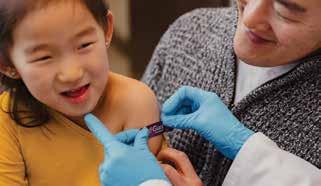





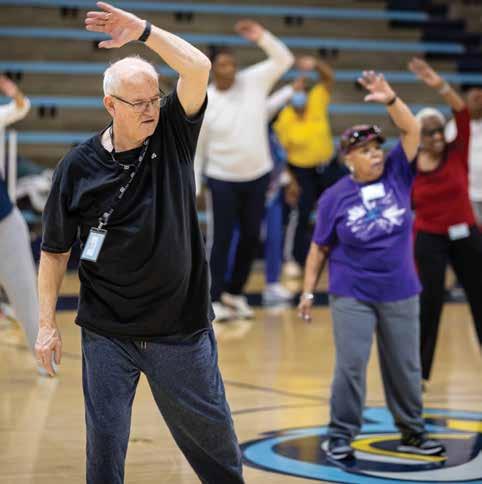
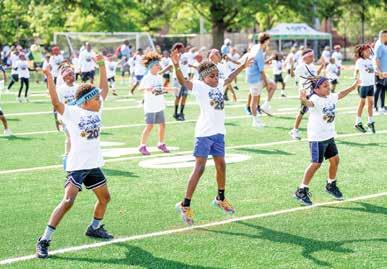
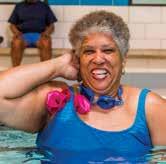
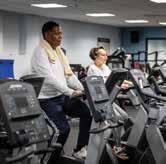
SAGE program offers classes for seniors ready to stay fit or sharpen their skills. Enjoy strength training, dance, computer skills, and more—all for just $40 per class.
down some common misconceptions of physical workouts, further highlighting the body’s natural ability to adapt to the training it’s repeatedly exposed to.
“Lifting weights does not create stability,” he told The Informer.
“The current trend of building a muscular gym body may look attractive and even appealing, but it does not maximize the ‘form dictates function’ rule.”
In other words, if athletes only train for strength, they may lack agility or stability.
“We have all seen muscle-bound bodies that do not have flexibility,” the chiropractor explained, “hence they have no flexibility to survive sudden lateral twists or movements.”
Winning is often the goal in competitive sports—but experts and athletes alike note that learning to navigate setbacks is just as important.
“People put too much seriousness into success and failure, especially on a basketball court. If you take a shot, you can only do two things: make it or miss. That’s how simple it is, and that’s what you try to get to your kids, so they’re not afraid of that simple act,” celebrated basketball player Michael Jordan once told a group of parents.
Parents, coaches, and counselors can play a key role in helping athletes bounce back after a loss and build emotional resilience, and that starts with separating the athlete’s identity from performance.
“You don’t put the end of the world on [making a shot] and kids sometimes have a tendency to do that,” Jordan, a three-time All-Star MVP, continued. “So as a parent, you have to simplify as much as possible to show them that either way, ‘I still love you if you miss that shot.’”
As they gear up for the sports season, health and fitness professionals suggest taking time to check in with young athletes, ask about their goals and be sure to engage with them throughout the year.
Orlandella encourages youth to listen to their body and mind, build trust within teams and coaches, and speak up when something doesn’t feel right. With the right support, there’s opportunity for an enjoyable, winning season.
“The mind-body connection becomes unconscious muscle memory,” Orlandella told The Informer. “Building this connection will ensure decades of expert performance in the years to come” n
WINNING IS OFTEN THE GOAL IN COMPETITIVE SPORTS—BUT EXPERTS AND ATHLETES ALIKE NOTE THAT LEARNING TO NAVIGATE SETBACKS IS JUST AS IMPORTANT.
By Julian B. Kiganda Soul Therapy Media
In today’s hyper-connected world, technology and social media are woven into nearly every aspect of everyday life—including children’s.
As the digital landscape continues to evolve, so do the risks, and cyber experts emphasize the importance of parents staying informed and actively engaged as essential to helping kids stay safe online.
“Although about only half of parents use formal parental controls, most are engaged in their
• Adolescents who spend more than three hours per day on social media have double the risk of experiencing symptoms of depression and anxiety.
• 64% of adolescents report frequent exposure to hate-based content.
• More than one-third of girls of color encounter racist content monthly.
• Almost 60% of adolescent girls have been contacted by strangers online.
With such alarming data, parents are concerned.
Nearly 70% say parenting is
tions about the man and showed an interest in their relationship.
“It was like I was talking to my friend. She was very cool and calm,” Shaheed told The Informer. “That conversation changed my life. From that moment forward, our relationship completely changed, because I saw her as a human, I saw her as a support system, I saw her as a friend…not just like a controlling, overbearing mom.”
Her mom supported her in a way that only a mother could.
“I remember the way that my


mom made me feel was better than the way that he made me feel. When I was supposed to be in a moment of trouble with her, she comforted me. When I was in a moment of trouble with him, he shamed me or made me

Buy one or more eligible produce items at participating Healthy Corners stores using your SUN Bucks or SNAP/EBT benefits, and receive a $5 coupon to buy more produce!


This institution is an equal opportunity provider.

feel guilty,” Shaheed continued. “With my mother, she didn’t make me feel that way. And that’s why I stayed.”
That experience was the cata -

Submitted by Adventist HealthCare
For the second year in a row, Adventist HealthCare Fort Washington Medical Center (FWMC) is the only hospital in Prince George’s County to earn an ‘A’ Leapfrog Hospital Safety Grade, an independent rating system that assesses hospitals based on their ability to prevent medical errors and patient harm.
In addition, the team has successfully reduced one of the county’s major healthcare bottlenecksEmergency Room wait times – by about half.
ty and speed, Adventist HealthCare Fort Washington Medical Center is setting the standard for clinical excellence in Prince George’s County.
The Leapfrog Hospital Safety Grade, a national assessment that is updated twice annually, is the only hospital ratings program focused exclusively on patient safety. The grades are peer-reviewed, fully transparent and free to the public.
“Attaining an ‘A’ safety grade reflects the boldness we have taken to reach new heights of excellence, compassion and innovation,” said Daffodil Baez, president of Adventist HealthCare Fort Washington Medical Center. “Hope and healing
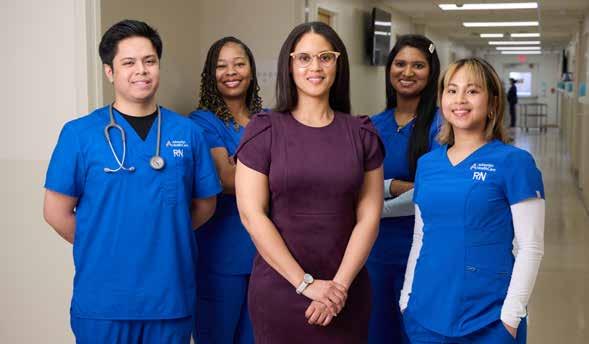
are synonymous with the work we do here every day at FWMC. I’m honored to lead such a phenomenal team at the only grade ‘A’ hospital in Prince George’s County.”
The team at FWMC has demonstrated their commitment to being a trusted choice for exceptional care in southern Prince George’s County by expanding operations that champion positive clinical outcomes and patient experiences.

IN AN EMERGENCY, MINUTES MATTER—so getting care quickly is vital.
Our Emergency Department is open 24/7 and staffed with board certified physicians and highly skilled nurses who are specially trained in emergency care--so you can get care fast and close to home.
Chest pain, high fever, abdominal pain, accidental injuries – whatever your emergency, at Adventist HealthCare Fort Washington Medical Center you’ll be in the capable hands of an emergency team you can trust – close to home.

It’s all part of the broader effort to improve safety and strengthen the hospital’s culture by keeping staff engaged, focused and consistent.
“Regardless of who comes through our door, how they come through our door or how many come through our door, we can’t miss a beat,” said Batavia Gillis, Director of Professional Development, Clinical Practice and Patient Experience at Adventist HealthCare Fort Washington Medical Center. “That’s what we strive to do, and we try to reinforce that with the team every day, every minute and every shift.”
Prince George’s County has been identified as having some of the longest emergency room wait times in Maryland, but thanks to some innovative changes, the team at Adventist HealthCare Fort Washington Medical Center managed to slash their times by about 40 percent.
The implementation of a vertical care unit (VCU), designed to streamline patient flow and improve throughput, patients can see a physician within an hour of arrival.
Unlike traditional models fo-
cused solely on bedside treatment, the VCU allows medical care to be delivered to patients with less severe conditions who can remain upright in comfortable recliner chairs.
“We are the only emergency department for the Fort Washington community, and most of our patients have to drive about 40 minutes to get to the next hospital,” explained Monique McCray, Medical Director for the Adventist HealthCare Fort Washington Center Emergency Department. “The fact that we provide excellent care means everything to this community.”
Baez shared that this recognition speaks volumes to the “hard work, talent and continued dedication” of the entire Fort Washington Medical Center team, because all roles, clinical and non-clinical, contribute to patient care.
“When we say that we will be a trusted choice for exceptional care in the community we serve, we mean it,” said Baez. “We will continue to focus our efforts on delivering high quality care because it’s what our community deserves.”
For more information about Adventist HealthCare Fort Washington Medical Center, call 301-292-7000 or visit AdventistFWMC.com/ForYou. n

as
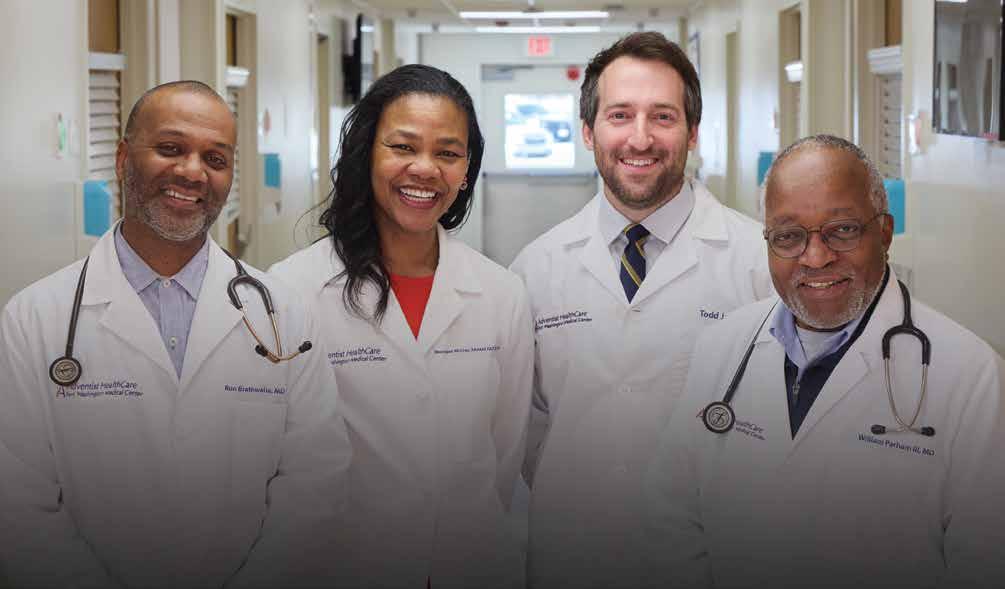
YOUR SAFETY IS OUR TOP PRIORITY!
ADVENTIST HEALTHCARE FORT WASHINGTON MEDICAL CENTER has earned an A grade from The Leapfrog Group, the prestigious national organization dedicated to evaluating and recognizing excellence in patient safety.
This recognition places us among the nation’s leading hospitals for patient safety, and is only made possible by the unwavering dedication of our team to providing safe, reliable, and compassionate healthcare.
We are honored to provide our community with local healthcare they can trust!
The Leapfrog Hospital Safety Grade is an elite designation from The Leapfrog Group, a national, independent watchdog that sets the highest standards for patient safety in the United States.

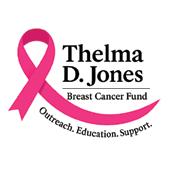
Wewelcomeyoutolearnmoreaboutourgrassroots movementandwhatwedoandencourageyouto becomeapartofoureffortstobuildastronger,healthier community. Ourprimaryprogramsandservicesinclude: ThelmaD.JonesBreastCancerFund
MonthlySupportGroupMeetings- Wehost thesignatureThelmaD.JonesBreastCancer FundSupportGroupMeetingeachmonth since2010at6:30pmonthethirdWednesday viaZoomandFacebookLive,unless otherwisespecified.Thesegatheringsreacha globalaudienceandprovideawelcoming spaceforsharing,learning,and encouragement.
SupporttoBreastCancerSurvivorswith Disabilities- Weprovideoutreachand ongoingsupporttobreastcancersurvivors withdisabilitiesandthebroaderdisability community.Weunderstandhowimportant communityisforsurvivorsandthedisability community,andweworkincollaborationwith partnerssuchastheChristopherandDana ReeveFoundationandHappyonWheels, LLCtoachievethisgoal.
EveryNovember,forthepasteight consecutiveyears,wehavededicateda supportgroupmeetingsolelytobreastcancer survivorswithdisabilitiesandthedisability communityingeneral.Thesemeetings includespecialactivitiesandfocusonrelevant topicstoprovideasupportiveenvironment.
MenʼsHealthInitiatives- Recognizing thatbreastcanceraffectseveryone,we conductspecialoutreachformalebreast cancersurvivorsanddedicatetwosupport groupmeetingseachyear(inFebruary andJune)specificallytomenʼshealth.
InspiringNewsletters- Everymonth,onthe dayofoursupportgroupmeeting,werelease anewsletterfeaturingspotlightsonnational andgloballeadersinbreastcanceradvocacy, heartwarmingsurvivorstoriesthatinspire hope,andup-to-date,evidence-based informationaboutbreastcancer.
InformationSharing&Community Engagement- Ourregular"Upcomingand OngoingEvents"e-blastsreachover10,000 individualsmonthlywithresourcesonbreast cancer,otherchronicillnesses,complementary therapies,researchopportunities,job vacancies,andpublicsafetytopics.
PatientNavigation&SupportServicesWesupportpatientsbyhelpingthem schedulescreenings,accompanyingthem toappointments,andconnectingthem withmentalhealthresources,food programs,rentalandshelterassistance, andservicesforthoseexperiencing intimatepartnerviolence,amongothers.
WeeklyFoodProgramandPPEs- Since March2020,wehavebeenhonoredtosupport ourneighborsthroughourWeeklyFood Program,providinghealthyandnutritious mealsaswellasbagsoffreshproduceto50-60 seniorsandfamilies.Thisweeklyinitiativeis madepossiblethroughthededicationofour volunteersandourvaluedpartners:The SouthwestBusinessImprovementDistrict, JamesCreekResidentsCouncil,andRiverPark Management.Together,wehaveservedmore than80,000mealsandbagsoffreshproduce anddistributednearly5,000masksandCOVID19kitstohelpprotectourcommunity.
YouthandCommunityOutreach- In SouthwestDC,wereachouttoyounggirls andwomeninpublichousing,engaging themthroughstreetorganizing,feeding programs,andneighborhoodevents.We offerminitalks,discussions,andone-ononeconversationstosharethebasicsof breasthealth.
Education&Outreach- Ourteamdelivers breasthealthclassesandpaneldiscussions— particularlyinhistoricallyunderserved communities—emphasizingthelife-saving powerofearlydetection.Wealsoofferoutreach athealthfairs,hospitals,schools,recreation centers,libraries,faith-basedinstitutions,and more.
BreastCancerWalks- Encouragesphysical activitybyorganizingteamsinterestedin participatinginvariouswalks,includingthe AmericanCancerSocietyMakingStrides AgainstBreastCancer,ACSRelayforLife, KomenfortheCure,Parkrun,andlocal communitywalks,providingexposuretothe organization’seffortsthroughour“Upcoming andOngoingEvents”listing. In2024andin partnershipwithHappyonWheels,LLCwho ledtheeffort,weraised$100,000overa twelve-yearperiodforACSMakingStrides AgainstBreastCancer,includingholdingthe covetedtitleofPacesetterseveraltimes.
Advocacy,Networking&PublicSpeakingOurorganizationconnectssurvivorswith medicalprofessionalsforfocusgroups, research,andmediaopportunities.Wealso providetrainedbreasthealthspeakersand organizeexpert-ledpaneldiscussionsinthe Washington,DCarea.
DirectFinancialAssistance- Weprovide limitedfinancialassistancetobreastcancer survivorsforessentialneedssuchasrentaland utilitybills,transportationtomedical appointments,medicalequipment,prescriptions, andfamilybereavement.
Pleaseconnectwithusat www.tdjbreastcancerfund.org or thelma@tdjbreastcancerfund.org orby calling 202-251-1639.

ThelmaD.Jones,AAS,CHW Founder,Thriver,&Advocate ThelmaD.JonesBreastCancerFund
ServingonBoards,Councils,Committees, andTaskForces -Weareproudtoshareour commitmenttoservingonvariousboards, committees,andtaskforcesatlocal,national, andgloballevels.Ourrepresentationhelps ensurethatabroadpopulationisincludedinthe breastcancerarenaandthatthehealth experiencesofourcommunityarewellrepresented.Thiscommitmentguidesscientific researchefforts,ensuringthattheright interventionsarepursuedtoenhanceour community'soverallhealth.Oureffortsinclude participationwithHowardUniversityCancer CenterJEDI(Justice,Equity,Diversity,and Inclusion)CommunityAdvisoryCouncil, GeorgetownLombardiRalphLaurenCenterfor CancerPreventionCommunityAdvisory Council,AmericanCancerSocietyVoicesof BlackWomenAmbassador,WorldBankGroup Staff-IMFAfricanAmericanAssociation, SouthwestNeighborhoodAssembly(several taskforces),andCo-Chair,NCBCAdvocacy SteeringCommitteefor2026Conference, amongothers.
Theseeffortshavealreadyhadapositiveimpact onourcommunity,drivingmeaningfulchanges inresearchandhealthpracticeswhile amplifyingeveryvoiceinourcommunity.

https://tdjbreastcancerfund.org/donate/

WewelcomeDonations ThankYou.
lyst for the work she does now.
“I got to experience all of it: the good, bad, and the ugly of the online world. I can show parents that you don’t need to know technology to protect your kids online.”
5
Despite the potential dangers youth face online, there are ways parents can work to protect them.
Shaheed shares six tips for keeping children safe online:
1. Anytime an app is online, you need parental controls. Any app connected to the internet and with a chat will have predators. It’s not about if, it’s about when and how they’re going to try to get to your child. If they are playing a game or using an app like Roblox, go online and search “Roblox parental controls.” You need to see if the chat and other risky features can be disabled. Many of these things are easy setups with instructions that can often be found on YouTube.
2. Open communication is key. Every single parental control has a workaround, and a determined child will figure it out. The best thing to do is to figure out why your children want to get around something. Then you can assess, discuss, and make decisions together. That connection is your best protection.
3. Teach children to evaluate the quality of their time online.
Starting in middle school,
switch the mindset from “screen time limits” to “what are your goals?” Is it productive or draining? Help them decide how much time is best spent developing their interests, creativity, and emotional well-being.
4. Respond to kids in crisis with empathy and emotional regulation.
It can be extremely distressing when a young person confides in you that they have been bullied online or you find out that they are being groomed by a predator. However, the best thing you can do to make them feel safe in coming to you is to not react in front of them. They are already experiencing their own emotions, and having to deal with yours too can make them think twice about sharing their challenges with you.
“Any emotions that you have, do it alone or with a supportive partner—not in front of your kids,” Shaheed suggests. “If you do react in front of your kids, you can always say ‘Give me a minute. I’m just going to take a couple of seconds to breathe because I’m really upset right now. I didn’t mean to yell at you. I just need a moment because I love you so much, and I don’t want something to happen to you.’”
The calmer you can be, the better the outcome will be, and the more information you’ll be able to get out of them.
5. Reference Common Sense Media (CSM), an independent source for media recommendations and advice for families.
Shaheed notes the site is a powerful resource for reviews, research, tips, and tools for parents and educators navigating the challenges of raising kids in a

hyper-digital world. An advocacy organization, CSM’s mission is to build a healthier, more equitable, and empowering future for all kids in the digital age.
When it comes to keeping children safe on and offline, adults’ greatest tools are communication and connection.
Shaheed emphasizes being the type of parent who sets clear boundaries around technology— and also the kind whose kids know they will listen without judgment when things go wrong. That’s how adults become children’s safest place in a world that sometimes isn’t.
Avoid being judgemental and create a comfortable environment for them to share what’s going on, especially if they get entangled with a predator.
If a child is willing to talk to—even with attitude or hesitation—that’s a powerful opening for connection.
“Kids are taking their lives be -
cause they feel shame. They feel judgment. They feel ‘I have nowhere to turn to. People are going to look at me differently. My family is going to disown me,” Shaheed said.
Adults sharing their own difficult experiences can help young people feel less alone and more willing to open up.
“If you’re like, ‘Look, I’m here for you. I’ve gone through really uncomfortable situations myself’— if you can relate to them, even better,” Shaheed said.
“If they came to talk to you, you are in the best position because they have opened up the door for connection and communication.”
Find out more about Shaheed and her work at www.cyberfareedah.com.
n
4 Fareedah Shaheed is an award-winning Internet Safety Expert specializing in helping parents protect their children online. (Courtesy Photo/FareedahShaheed)




September 20th, 2025 11:00 AM - 3:00 PM Sycamore & Oak: 1110 Oak Dr SE, Washington, DC 20032 https://forms.gle/287BPmMsq47sWqFu5


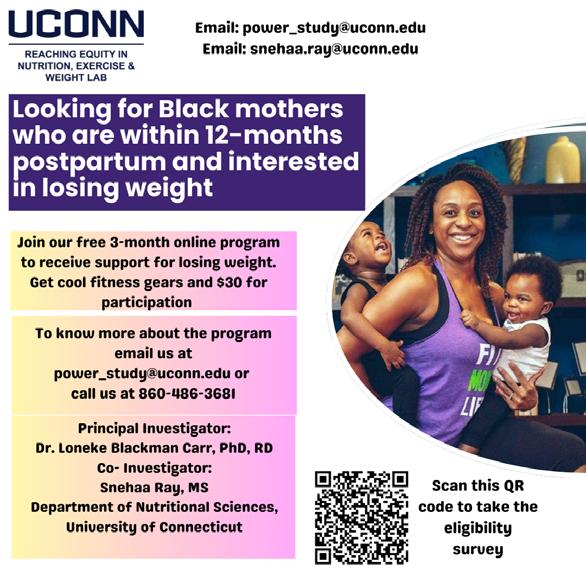
By Viola Llewllyn and Julian B. Kiganda Soul Therapy Media
When it comes to young people’s mental health, simple acts of love, support, and acceptance can make a powerful difference.
“Parents play an important role in the psychosocial care of their children,” according to a 2022 study published by the National Institutes of Health (NIH) National Library of Medicine (NLM).
While even the most caring and attentive parent might not know all the best ways to care for their children’s mental health, there are tools adults can give youth to help them not only survive, but thrive.
Below are seven tools and activities for parents to offer their children-- whether starting kindergarten or heading into senior year--- to maintain students’ overall wellness year round.
1. Self-Care Kit:
Creating a personalized self-care kit together can be a powerful way to manage stress and feel emotionally supported. Items can include: a journal; handwritten notes of encouragement; favorite photos; and a “good luck” charm. Encourage relaxation by including a piece of fabric scented with calming essential oils like lavender, chamomile, or vanilla.
2. Fidget Toys:
These toys serve as sensory tools that can provide children with an outlet for anxiety and stress. Some examples include fidget cubes, spinner rings, tangle toys, squishies or stress balls, putty or kinetic sand.
3. Coloring Books:
“The act of coloring occupies the mind by requiring focus; it slows down the noise that creates anxiety,” Dr. Simone Jacobs, a licensed therapist and founder of Takoma Therapy in Montgomery County, Maryland explained. “The mind needs to be strengthened, it needs flexibility, it needs to be fed, and it needs rest.
Colouring can do all of that simultaneously.”
4. Weighted Plush Toy or Blanket:
Small, weighted items can help children and youth who are experiencing anxiety or restlessness gain a sense of calm and safety, according to the TCU Institute of Child Development. Common options include weighted stuffed animals, dolls, or blankets, which are filled with beads or pellets to provide calming pressure that supports emotional balance.
5. Movement:
Dance, sports, and martial arts help calm anxious minds, center kids, and build confidence. According to the International Journal of Behavioral Nutrition and Physical Activity, 60 minutes of moderate-to-vigorous activity daily can boost mood, improve focus, and support mental health
6. Breathing Exercises:
Unlike toys or activities that help manage anxiety externally, breathing is a tool kids can tap into from within, regardless of where they are. Teaching children how to use their breath to calm themselves gives them a lifelong skill for navigating stress.
7. Spiritual Practices:
Prayer, meditation, church, and spiritual community can all contribute to a child’s emotional and mental well-being. When parents model spiritual practices—whether based in traditional religion or more alternative paths—it teaches children how to ground themselves, find meaning, and support inner peace. Further, experts remind parents to remember, the best support there is: love.
“Your kids require you most of all to love them for who they are,” said retired professor, community organizer and activist Bill Ayers, “not to spend your whole time trying to correct them.” n
Submitted by AmeriHealth Caritas District of Columbia (DC)
Our summer days are getting hotter and more dangerous. As climate change increases the intensity of heat waves, it’s important now more than ever to understand how extreme heat affects our health and what we can do to stay safe.
Heat waves are more than just uncomfortable — they can cause serious health risks, especially for young children, older adults, people with chronic illnesses, and people without access to air conditioning. Whether you’re walking to the store, commuting on public transit, or just trying to get through the day, summer heat can cause significant health issues.
The dangers of extreme heat
A heat wave is a period of unusually high temperatures lasting for two or more days.1 In Washington, DC, when temperatures reach 95 degrees F or above, the District implements the Heat Emergency Plan and opens cooling centers for residents to seek relief from the heat.2
When your body cannot cool itself down, it can overheat — especially when humidity is high. That’s because sweat doesn’t evaporate as easily, making it harder to lower your body temperature. This can lead to:
• Heat exhaustion: The body’s response to losing too much water and salt, as a result of sweating.3
• Heat stroke: A life-threatening emergency where the body’s temperature rises to 106 degrees F or higher within 10 to 15 minutes. Heat stroke can cause confusion, slurred speech,
seizures, or death.3
• Dehydration: Occurs when the body uses or loses more fluid than it is able to replace.4
Warning signs of heat illness
During times of extreme heat, watch for these symptoms in yourself or others — especially children and older adults:5
• Dizziness
• Muscle cramps or weakness
• Nausea or vomiting
• Hot, dry, or damp skin
• Fainting or loss of consciousness
Call 911 immediately if someone is showing signs of heat stroke or becomes unresponsive.
Tips for beating the heat
Staying safe during a heat wave only requires a little preparation and awareness. You can stay cool during days of extreme heat by:
• Avoiding outdoor activities during the hottest part of the day (11 a.m. – 3 p.m.)
• Wearing loose-fitting, light-colored clothes
• Taking cool showers or baths
• Staying hydrated throughout the day, even if you’re not thirsty
• Making sure older neighbors, friends, or relatives are safe and cool
• Never leaving children or pets in a parked car
• Keeping pets indoors and hydrated
DC resources during heat emergencies
The DC government activates cooling centers across the city during heat emergencies. These are free, air-conditioned spaces where residents can get relief from the heat. To find a cooling center near you:
• Visit heat.dc.gov
• Call the DC Shelter Hotline at 202-399-7093
• Follow updates from the DC Department of Human Services
Some community centers, libraries, and recreation centers may also extend their hours during heat emergencies.
Sources
1. “During a Heatwave,” National Weather Service, https://web.archive.org/ web/20250201173950/https://www. weather.gov/safety/heat-during, accessed June 9, 2025.
2. “Heat Emergency Plan Information,” DC.gov, DC Homeland Security and Emergency Management Agency, https://hsema.dc.gov/page/heat-emergency-plan-information, accessed June 9, 2025.
3. “Heat-Related Illnesses,” Centers for Disease Control and Prevention, September 10, 2024, https://web. archive.org/
Before the back-to-school excitement begins, now is the perfect time to take care of your health and get rewarded for it. If you’re a teen enrolled in AmeriHealth Caritas DC, the Healthy Rewards Program lets you earn gift card rewards when you complete health activities. Here are a few ways to earn rewards:
• Get your annual wellness checkup.
• Visit the dentist for a cleaning.
• Stay up to date on vaccines.
If you’re not sure what appointments you’ve had or need, talk to your parents or caregivers to help you review your schedule. They can contact your provider to help you stay informed about your appointments.
Staying on top of your health now can help you feel better and stay focused once you are back in school. The Healthy Rewards Program allows enrollees to earn gift cards to retailers such as Walmart, Safeway, CVS Pharmacy, The Home Depot, Apple, Google Play, and more. Healthy habits now can create a stronger you this school year.
To learn more about how to sign up, visit www.amerihealthcaritasdc.com/healthyrewards.
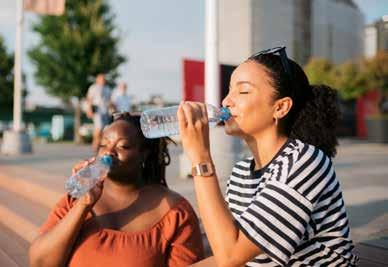
web/20250118080814/https://www. cdc.gov/niosh/heat-stress/about/illnesses. html, accessed June 9, 2025.
4. “Dehydration,” Mayo Clinic, May 2, 2025, https://www.mayoclinic.org/diseases-conditions/dehydration/symptoms-causes/syc-20354086, accessed June 9, 2025.
5. “Heat Cramps, Exhaustion, Stroke,” National Weather Service,
https://web.archive.org/ web/20250117232304/https://www. weather.gov/safety/heat-illness, accessed June 9, 2025.
All images are submitted by AmeriHealth Caritas District of Columbia and are used under license for illustrative purposes only. Any individual depicted is a model n
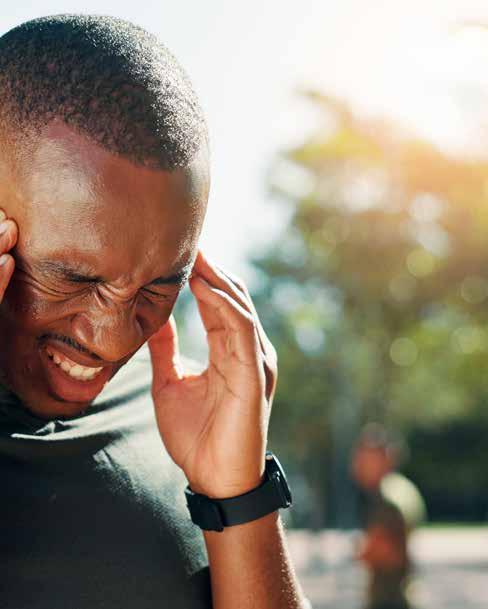

During extreme heat, it is important to recognize the signs and symptoms of heat exhaustion and stroke. Symptoms may include:
• Dry red skin
• Convulsions
• Throbbing headaches
• Disorientation
• Chills
• Delirium
• Coma
If you suspect that you or someone you know is experiencing a heat-related illness, call 911
Written by Safeway’s Sincerely Health
According to the Centers for Disease Control (CDC), adults need at least 30 minutes of moderate-intensity exercise 5 days a week.[1] But what’s the best time of the day for exercise, and what physical activities can you do to meet this requirement?
Being more active doesn’t necessarily require a gym membership or expensive workout equipment. Any movement throughout the day can count toward your daily physical activity quota.
With that in mind, here are simple ways to move more during the day to be more active at home or work.
Walk while you work
One of the best ways to move more and stay productive at such a job can be to walk or stand while you work. For example, you could work at an adjustable desk that enables you to switch between standing and sitting. Alternatively, you might pair a
walking pad with a standing desk to walk in place as you work. No adjustable desk? You could instead try getting up every 30 minutes for a quick walk or stretch break.
Binge-watch and work on your fitness
Sitting too long in front of the TV is just as harmful as sitting for long hours at work. But you don’t necessarily have to sacrifice your shows to be more active at home. Instead, try exercising while enjoying your favorite show or movie. You could lift weights, do stretches, or practice light aerobic exercises without taking your eyes off the screen.
your car
You don’t have to drive everywhere. Walking or cycling to your destinations can help you adopt a more physically active lifestyle.
And if driving is a must, you can still make healthier choices by parking farther from the entrance. It might not seem like much, but those
extra steps add up and can make a major dent in your daily physical activity goals.
Take the stairs
The elevator isn’t your friend if you want to move more during the day. Taking the stairs, on the other hand, makes for great exercise.
According to a study, 7 minutes of daily stair climbing can cut heart attack risk in half over 10 years.[6] Further, climbing stairs can burn more calories than jogging, eliminating 8-11 calories per minute.[7]
So, instead of taking the easy way out with the elevator, use the stairs whenever you can. It’s a small change that can positively impact your fitness and overall health over time.
Make cleaning fun
Keeping your home clean doesn’t have to be monotonous. Turn it into a fun activity with music that enlivens you and exercises that switch things up. For example, add lunges, twists, dance moves, and other small

movements while cleaning. It doesn’t have to be a full-blown workout, just simple moves that make house cleaning more engaging and physically rewarding.
Now that you know ways to become more active, you may be curious about how the Sincerely Health nutrition tools in the app can help.
You can start by downloading the Safeway app and create a personalized Sincerely Health nutrition pro-
file. You’ll save $10 on groceries* for creating an account.
Your nutrition profile allows you to:
• Set specific nutrition goals.
• Earn 10 points for each item you purchase for a maximum 100 points per order (that’s 10 items at 10 points each).
Join Safeway’s Sincerely Health and set up your nutrition profile today. n

Get $10 off groceries
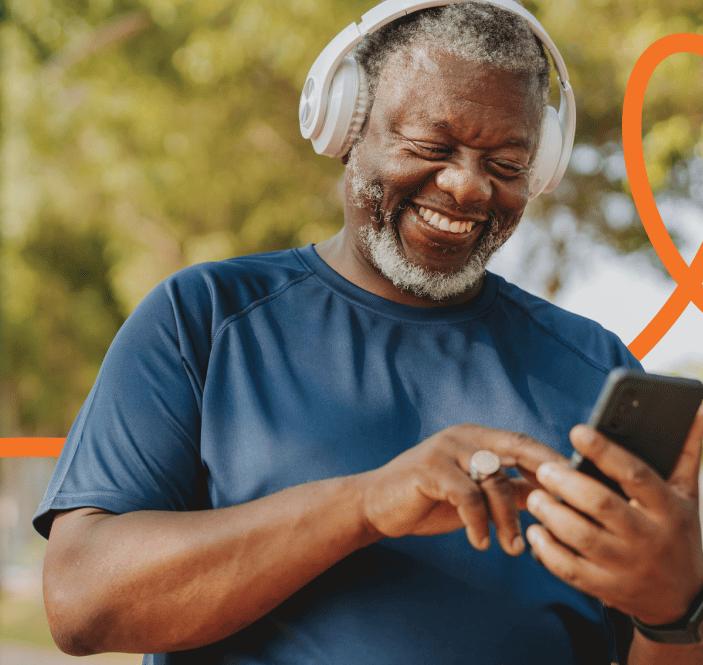
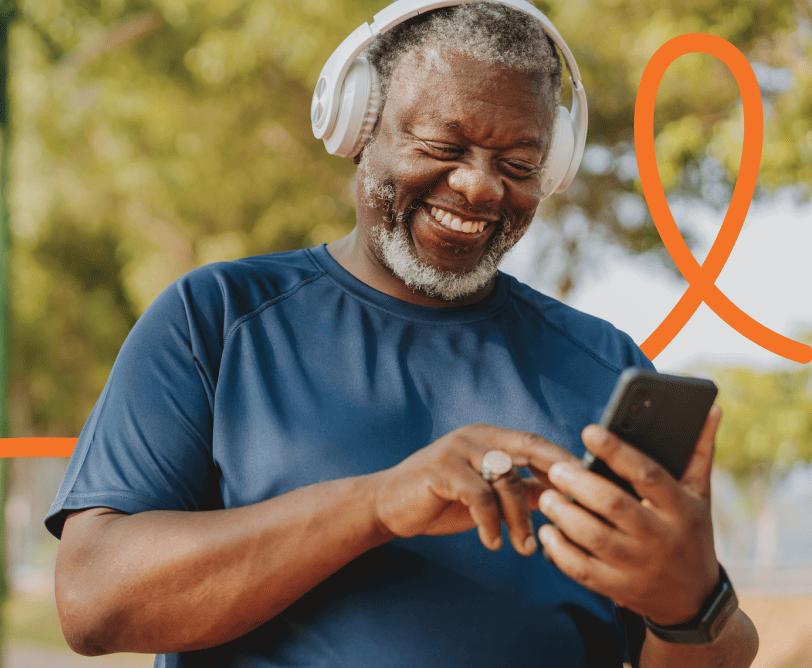
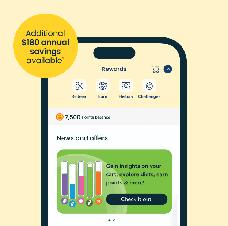
Health habits, real rewards
Earn grocery coupons just for making simple, healthy choices –like eating better and moving more.
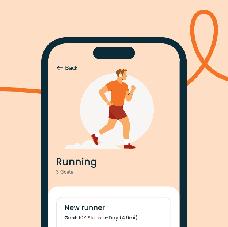
Create a health profile, boost your perks
Want more from your for U™ membership?
Create your health profile with Sincerely Health and enjoy free wellness tools, exclusive offers, and smart shopping insights –just for you. Plus, get $10 off groceries just for signing up!*
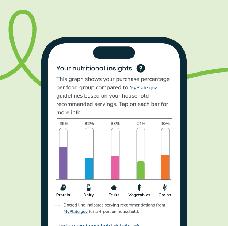
Free wellness tools that work Health insights just for U™
Sincerely Health customers log 2x more steps than the national average.
**Set your activity goals with easy-to-use wellness tools.
Discover food recommendations that fit your lifestyle and earn rewards through healthier choices
Bonita Coe M.D., M.B.A.
Let’s review some important preventive health guidelines for adult men and women. Talk to your doctor about what you need to have ordered to get up to date with all of your recommended preventive health screenings.
Your individual preventive health and cancer screening recommendations will depend upon your personal history, family history and genetic testing results.
Please note: many city, county and state health departments have low cost or free preventive health and cancer screening programs.
for people at average risk
Breast cancer screening
An annual mammogram is recommended for women starting at age 40. Depending on your personal and family history, you may need additional risk assessment, genetic testing or alternative screening choices. (ACS American Cancer Society guidelines)
Cervical cancer screening (ACS Guidelines)
Pap test every 3 years from age 25-29
From age 30-65
HPV test alone every 5 years OR Pap test alone every 3 years OR Pap test with HPV every 5 years
Colon (colorectal) cancer screening
The standard screening test is a colonoscopy starting at age 45, however there are other screening test options. (ACS Guidelines)
Prostate cancer screening (ACS Guidelines)
A PSA blood test at age 50
A PSA blood test at age 45 for men
Author Bio

at high risk, including African-American men and men who have/had a direct family member with prostate cancer. Men should start even earlier at age 40, if they have even higher risk.
Lung cancer screening
An annual low dose CT scan of the chest is recommended for people between age 50-80 who smoked or used to smoke at least 20 pack years (the equivalent of one pack per day for 20 years). (ACS Guidelines)
Screening for osteoporosis
A bone density test should be done in women at least at age 65 to screen for osteoporosis, a bone condition that can put you at increased risk for hip and spine fractures. (U.S Preventive Services Task Force)
Abdominal aorta aneurysm screening
A one time ultrasound of the abdominal aorta is recommended for men aged 65-75 who have EVER SMOKED to look for an aneurysm that can break open, bleed and cause even fatal complications. (U.S Preventive Services Task Force)
STI (sexually transmitted infecton) screening
Checking for HIV at least once in all adults is recommended. Checking for Hepatitis C is recommended for all adults. Checking for other infections and especially Hepatitis B and syphilis infections is also recommended for many people. These are all infections that you can have for many years where damage to your organs can be happening without you having any symptoms. (Center for Disease Control)
These are some vaccinations recommended for adults in good health. Your recommendations will be different if you have personal health factors (pregnancy, immunocompromised, autoimmune disorders, cancer and other conditions) that make you (or your unborn child) at high risk for infections (see easy to read CDC table).
Influenza vaccine (Flu shot)
Every Fall
COVID-19 vaccine
At least one dose of the current COVID 19 vaccine, 65 and older, 2 doses, per CDC Guidelines
RSV (respiratory syncytial virus) vaccine
Age 19-49, if pregnant during RSV season, age 75 and older
Shingles (varicella zoster virus) vaccine
Age 50 and older
Pneumonia (pneumonococcal) vaccine
Age 50 and older
HPV (human papilloma virus) vaccine
Age 19-26, some up to age 45
Tdap/Td vaccine (tetanus-diphtheria-pertussis shot)
All adults every 10 years
Hepatitis B vaccine
Age 19-59, some age 60 and older
Knowing these numbers goes a long way to preventing cardiovascular disease, like heart attack and stroke.
Blood pressure
Should be checked at least once a year, if normal and at every visit, if abnormal.
Bonita Coe, MD, MBA is a practicing Internal Medicine/primary care physician with over 25 years of experience taking care of adult patients in outpatient (in-person and virtual), nursing home and hospital settings, including academic practices teaching medical students and residents.
She has done numerous speaking engagements (in person, radio, webinars) for laypersons, colleagues and corporate audiences over the course of her career about topics informing audiences about preventive health, chronic disease and lifestyle management. Since October 2023, she has been writing a monthly health newsletter posted on her website, besthealthforyourlife.com, on important health related topics and she published her first book in November 2024, How To Help Your Doctor Help You: A Guide For Men and Women to Manage Health Proactively, a practical guide designed to empower individuals to better manage their health, build stronger patient-doctor relationships, and enhance their overall well-being. Her book can be ordered from your local bookseller or online at Barnes and Noble, Books-A-Million or Amazon.
Cholesterol
Cholesterol (lipids) is a fat substance that circulates in the body to help with many cell functions.
• You should have your cholesterol checked at least every 5 years, if normal and more often if you have any abnormal numbers or are taking cholesterol/lipid lowering medication.
• There are three main components of the cholesterol/lipid profile to know:
• HDL-the good cholesterol
• LDL-the bad cholesterol. Your LDL should be 100 or less and less than 70 if you have diabetes, heart attack or stroke already.
• Triglycerides-fat in the blood. A triglyceride level of 150 or above needs treatment with at least improving diet and exercise and levels above 500 warrant treatment with prescription medication!
• If you are age 40 or older, your doctor should also do a risk assessment calculation (ASCVD Risk Score) using the results of your lipid panel and other variables to further assess your risk for heart attack and stroke.
• Talk to your doctor about getting a separate Lp(a) test and other advanced lipid testing blood tests to see if you have genetic lipid markers that put you at high risk for heart attack. (Information about Lp(a) levels).
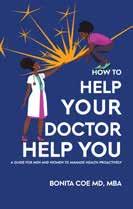
Glucose (blood sugar) (American Diabetes Association)
Screening for diabetes should be done at least every 3 years with a Hemoglobin A1C blood test. The Hemoglobin A1C is how much sugar is riding around on your red blood cells. A normal Hemoglobin A1C is 5.6% or less. Pre-diabetes is defined by a Hemoglobin A1C (HgbA1C) between 5.7% and 6.4%. Type II Diabetes is currently defined as when the Hemoglobin A1C gets to 6.5% or above.
WHAT YOU EAT MOVES THE NEEDLE TOWARD BETTER HEALTH!
Pick one unhealthy eating habit that you have and make a plan to improve it by making consistent lifestyle changes. This cookbook from the Association of Black Cardiologists is an excellent guide for your life journey to healthy cooking and eating. n



connect@soultherapymedia.com.